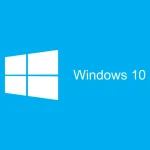In order to connect with today’s customers, you have to successfully cut through the noise and set yourself apart as the clear and obvious choice. One of the best ways to do this is by putting the customer first.
What is a Customer-Centric Business?
To understand what a customer-centric business is and what makes it special, you must first understand the DNA of a “normal” business.
The average business has an “us” and “them” mentality. They’re very clear on what they want – usually money, power, prestige, or a combination – and then use customers as pawns to help them achieve these outcomes.
A customer-centric business flips the script and makes everything about the customer first (with the understanding that this approach will ultimately benefit the business). Whereas most businesses use transactional service models, customer-centric businesses implement relational service models. A one-time sale isn’t something to be celebrated in these businesses – they want long-term, repeat purchases from loyal customers who ultimately become raving fans.
And guess what? This approach works. Research shows that 7-in-10 customers spend more money with businesses that deliver great service. They’re also much more likely to stick around (which is good news, considering that increasing customer retention rates by 5 percent increases profits by as much as 25 percent).
3 Tips for Putting the Customer First
Want to grow your business and cultivate greater loyalty among your customers? It all starts with putting them first. Here are a few suggestions:
- Improve Customer Service
Customers need to know you care. And the best way to communicate you care is by offering exceptional customer service that prioritizes their wants and needs. But this is where the problem usually emerges.
According to research from PwC, just 38 percent of American consumers believe the employees they interact with actually understand their needs. And if your employees don’t understand the customer’s needs, how can they possibly offer good service?
The first step to improving customer service is to empower your team with the right information. This starts with gathering direct feedback from customers using a combination of resources. We recommend starting with email surveys and using this feedback to quickly see where you stand in key areas. Then based on this information, you can implement proactive customer service strategies that show customers you understand them and care about them.
- Tailor Your Branding
Selfish brands view themselves as their customers’ savior. Customer-centric brands adopt the title of “guide.” Every business has its own unique DNA, audience, and message, but you could benefit from studying entrepreneur Donald Miller’s “StoryBrand” framework.
The StoryBrand framework is a 7-part formula that goes like this: “A character with a problem meets a guide that gives them a plan that calls them to action that results in success/helps them avoid failure.” In this formula, you are not the hero – the customer is. You are merely the guide who gives them a plan and calls them to action.
Learning to tell your brand’s story through this framework does a few things. First off, it gives you a simple story that can be used over and over again to promote consistency. Secondly, it makes the customer the hero of their own story (which is ultimately what they want). It’s a nearly foolproof method for customer-centric branding.
- Give Before You Ask
Most businesses have things backward. They ask for something, give a little, and then ask again. But if you study the most successful customer-centric brands, you’ll discover a very different approach. They give, give, and give again…then they make the ask.
As counter-intuitive as it may seem, you should give away your best stuff for free. When people see you do this, they’ll automatically trust you and assume that your paid stuff has even more value.
Give Your Business a Leg Up
When you prioritize customers, they take notice. Happy customers are more likely to stick around and continue to make repeat purchases. And when you consider that it’s 5x-25x more expensive to acquire a new customer than to keep a current one, you can quickly see just how cost-effective it is to build a customer-centric business model.
Thus, we’ll leave you with one simple question: Is now the time to re-architect your business?







